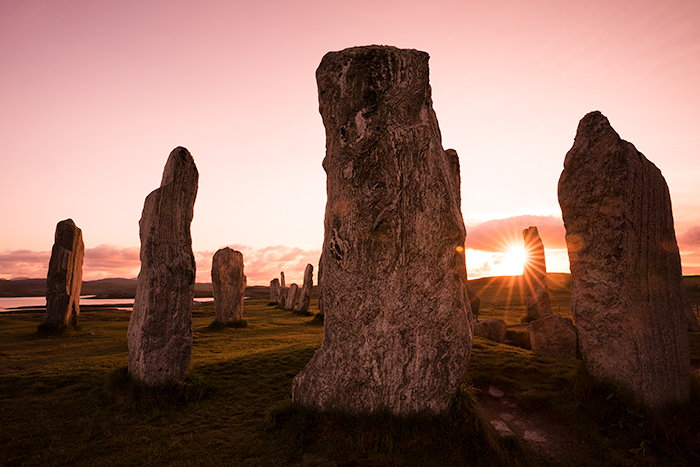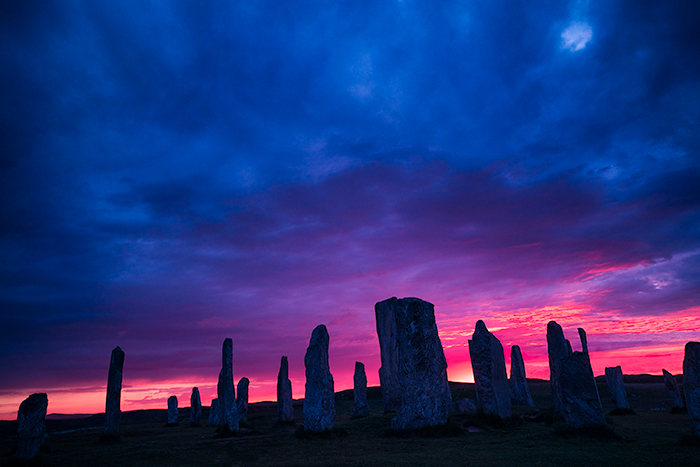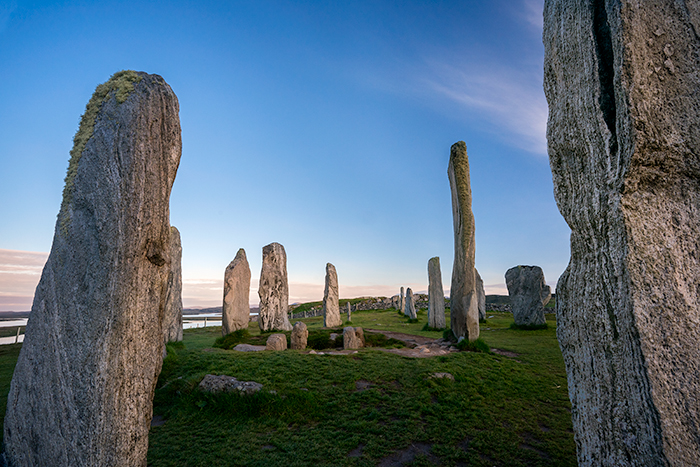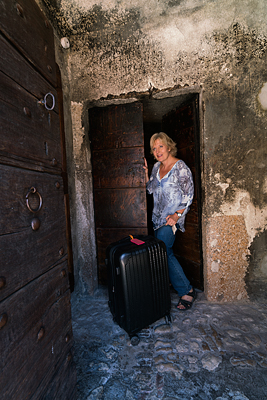
 The most important tip I can share about photographing the Callanish stones is this:
The most important tip I can share about photographing the Callanish stones is this:
Photograph with intent.
Why? Because it adds depth. And content always trumps technical perfection.
Give photos meaning by knowing what to capture and why.


Analyzing Intent…identifying the WHY
Before leaving home, I thought about my intent in photographing the Callanish stones. What was important to show? What was the historical significance of this place? Associations? Descriptive words? What makes it stand out in the world, and why did I want to go there?
After reading articles online and guidebooks, I jotted notes about my thoughts:
Associations: vortex, energy, touching the stones for power for time travel, like Claire in the Outlander tv series.
Historical: Nobody knows exactly who built them or why, although there are some legends associated with a “shining one” who appeared to locals. A strange phenomenon occurs every 18.61 years with a full moon “standing still.” Scientists believe the stones served as an astronomical planner to help the farmers plant their crops…because stones were instrumental as astronomical devices for Neolithic people back in the Stone Age. That’s right, we’re talking waaaay back in 2900 B.C.!!! The center stones are important in the intersection of the Celtic cross design, although no one knows the exact purpose–used for worship? Burial? Other???
Descriptive words: spooky, eerie, desolate, approachable, remote, tall, ancient.
Stands out: oldest standing stones in world, touchable, off the beaten path, mysterious origin.


Previsualizing…deciding WHAT to capture
1. How could I show the energy of the stones? (position of sun using f16 to create sunstar behind person touching stones)
2. Highlight the historical significance of center stones (composition)
3. Could I add drama with a night sky? Was there a full moon during my visit? (no) Could I capture the Milky Way? (not visible in June)
4. How could I show the spooky eeriness of this place? (shoot at night with thick clouds or dramatic light)
5. Show remoteness? (avoid people, cars or farmhouses in the frame)


Doing that exercise–thinking about the what & why–helped me create a game plan so that I could focus on capturing my intent when I came here.

 And embellish in PhotoShop once home. And have a little fun adding eerieness.
And embellish in PhotoShop once home. And have a little fun adding eerieness.


I just wish I would’ve done my homework a little more fully before I traveled all the way here. Because I missed the importance of including the moon. According to articles I’ve read since being there, scientists believe that the giant slabs of gneiss, the world’s oldest rocks, were arranged in a specific shape to track the lunar rays that impacted the farming of the day. Yes, lunar. Certain stones with sharp points were angled as ‘sighting devices’ to study the moon in the sky.


Had I known this, I would’ve come back in the middle of the night to capture the moon in my frame. Instead, I focused on the sun–trying to show energy and power thru the sunbeams. But it was the moon that was important here. So did I get any pictures with the moon? No.
But you can. And they would be pretty spectacular to see, because pics online include stones with amazing sunsets and northern lights, but rarely the moon. Granted, it is difficult to capture the moon in the summer when the sun doesn’t set till close to 11pm and rises at 4am. But I would’ve gladly tried.
Using an app like PhotoPills allows you to see exactly where the sun and moon are for a given day at a specific place. You can play around with dates and narrow down the exact perfect time to visit based on what you want to see. The core of the Milky Way Galaxy vertically touching down on the center stone? The full moon sitting low in the sky looking like it’s perched on one of the stones? Your imagination can come to life—as long as the weather cooperates—just by doing a little homework.
So why go to all this trouble to research a place and analyze your intent in advance?
Because if you don’t, you may end up visiting during the day, like most do. After all, that’s when the Visitor Center is open (which is worth seeing). Just know that on a clear day, you’ll see this:

 This was taken late afternoon– not even midday. As you can see, there’s no detail in the people or the rocks. Harsh sunlight casts dark shadows on the tourists. And the drama of the standing stones get lost. It’s ugly, featureless and ho-hum. Plus on closer inspection, it reveals all the houses, sheep and farms surrounding the stones which further detracts from the mystery of this special place. All because there’s no diffusion of the sun.
This was taken late afternoon– not even midday. As you can see, there’s no detail in the people or the rocks. Harsh sunlight casts dark shadows on the tourists. And the drama of the standing stones get lost. It’s ugly, featureless and ho-hum. Plus on closer inspection, it reveals all the houses, sheep and farms surrounding the stones which further detracts from the mystery of this special place. All because there’s no diffusion of the sun.


Even when changing the composition to showcase the concentric inner circle of the Celtic cross shaped stones, you can still see the surrounding farms. Shooting with the sun to my left to create some side lighting did draw out some detail on the closest rocks. But, both images fail. Neither trigger strong feelings about the place.
But if you analyze your intent in advance, you can arrange to visit during times of magical light—sunrise or sunset—photographing the Callanish stones in all their ancient beauty, showcasing their timelessness, remoteness and mystery.


Tips for photographing the Callanish stones:
- Use PhotoPills or another app to identify the specific time that the moon rises and sets for the intended date of your visit. Plan to be there accordingly.
- Identify sunrise and sunset times. Summer time sunsets happen really late–best to sleep nearby.
- Decide in advance your intent. What specifically do you want to show?
- Choose your camera settings to fit your intent (sunburst stars f16; spooky skies use a slow SS (2 sec +/-) depending on speed of moving clouds). Use a tripod.
- Arrange your stay to visit multiple times to catch the changing light and variable cloud cover. Come during or after a storm, or when thick, fast-moving clouds are racing overhead.


Traveling here:
My family and I traveled to this remote corner of the world, an island in the northern waters of the Atlantic off the northwest coast of Scotland, in one very long day. It required a 6 hour drive from Glasgow to reach the Uig ferry terminal on the northern end of the Isle of Skye, then an hour long ferry ride to reach this island in the Outer Hebrides, and another hour’s drive to reach the Callanish region on the western side of the Isle of Lewis. We spent 4 nights in the area, choosing a farmhouse located just a five minute drive away so we could visit multiple times—morning, late afternoon and especially late at night.
Callanish is a special place to photograph. Savor your time here. Think about your intent, visit in magical light and let the stones sing for themselves. And capture the moon for me! 😉
Pin this for later…


.jpg)
